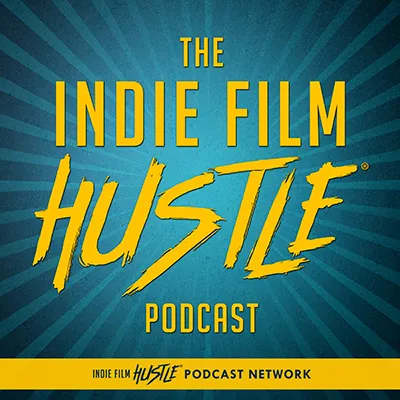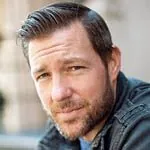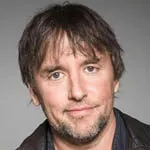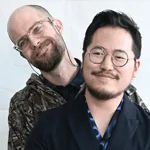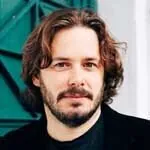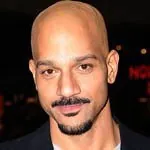Ah, the good ol’ digital vs film debate. Well, you won’t get any of that in the article or podcast. With Quentin Tarantino’s The Hateful Eight coming out Dec 25, 2015, and it is shot on “Glorious 70mm,” there has been a lot of chatter about film again.
With filmmakers like Christopher Nolan shooting 35mm and IMAX on his latest film and JJ Abrams shooting Star Wars: The Force Awakens in 35 mm, film seems to still be an art form that many filmmakers are not ready to let go of just yet.
What Quentin Tarantino has done with The Hateful Eight is unique. He has brought back to life the Ultra Panavision 70 technique along with anamorphic 65mm lenses that haven’t been seen since the ’60s.
Here are some specs:
- Camera: Panavision 65 HR Camera and Panavision Panaflex System 65 Studio
- Lenses: Panavision APO Panatar
- Film Stock 65mm: Kodak Vision3 200T 5213, Vision3 500T 5219
- Aspect Ratio: 2.75:1
Quentin Tarantino has some very strong opinions about shooting digital.
“Part of the reason I’m feeling [like retiring] is, I can’t stand all this digital stuff. This is not what I signed up for,” he said.
“Even the fact that digital presentation is the way it is right now – I mean, it’s television in public, it’s just television in public. That’s how I feel about it. I came into this for film.”
He continued:
“I hate that stuff. I shoot film. But to me, even digital projection is – it’s over, as far as I’m concerned. It’s over.”
“If I’m gonna do TV in public, I’d rather just write one of my big scripts and do it as a miniseries for HBO, and then I don’t have the time pressure that I’m always under, and I get to actually use all the script,” he explained.
“I always write these huge scripts that I have to kind of – my scripts aren’t like blueprints. They’re not novels, but they’re novels written with script format. And so I’m adapting the script into a movie every day.”
This is what he said he’d do if he would write another huge epic.
“The one movie that I was actually able to use everything – where you actually have the entire breadth of what I spent a year writing – was the two Kill Bill movies because it’s two movies. So if I’m gonna do another big epic thing again, it’ll probably be like a 6-hour miniseries or something.”
The Hateful Eight will be getting a nation-wide release in Ultra Panavision 70, which means it’ll be the first fiction feature film screened in anamorphic 70mm with a single-projector Cinerama system since Khartoum in 1966.
Watch Quentin Tarantino, director of photography Bob Richardson and Panavision explain how they brought Ultra Panavision 70, back to life in The Hateful Eight.
A Christmas Eve Conversation With Quentin Tarantino & Paul Thomas Anderson on 70mm Film
Quentin: I didn’t realize how much of a lost cause [35mm] was. At the same time I didn’t realize to the same extent 70mm would be a drawing point. Not just to me and other film geeks. There is no intelligent argument to be had that puts digital in front of [70mm]. It actually might be film’s saving grace. Film’s last stand. Film’s last night in the arena — and actually conquer.
Check out this amazing documentary SIDE BY SIDE, produced by Keanu Reeves, takes an in-depth look at this revolution.
Through interviews with directors, cinematographers, film students, producers, technologists, editors, and exhibitors, SIDE BY SIDE examines all aspects of filmmaking — from capture to edit, visual effects to color correction, distribution to archive.
At this moment when digital and photochemical filmmaking coexist, SIDE BY SIDE explores what has been gained, what is lost, and what the future might bring.
Right-click here to download the MP3
Alex Ferrari 0:52
So today, guys, with The Hateful Eight coming out in a few weeks. And all in quitting, like being quitting Tarantino being so adamant about shooting film and shooting film shooting film, and he actually is brought back an amazing format, basically 70 millimeter, ultra panavision hasn't been used since the 60s. And he's been able to bring back this, this beautiful format for Hateful Eight. And he's doing a roadshow around the country. So for people who want to see it in film in this massive format, they can see it in that format. So I wanted to talk a little bit about the differences between film and digital. And this has been debated to death. So I'm not going to do that. But for a lot of people who are not familiar with actually shooting film and the differences. I just wanted to kind of to kind of shed a little light on this. But before we do, I want you to hear what Quentin Tarantino himself has to say about the process.
Interviewer 1:53
And you're you're not too sure about the digital era Are you in terms of as opposed to the old day of going to the cinema? And yet no, I'm widescreen as on the digital era.
Quentin Tarantino 2:05
At least it does nothing for me. It does nothing for me. I mean, I actually think I'm getting gypped when I go to a movie and I realize it's either been shot on digital or being projected in digital. Um, I mean some people feel differently about this but I think it's the death kill I think it's the death rattle and you know, it's Yeah, I do. And I also have even another whole aspect about it, you know, I've always believed in the magic of movies. Yeah, and to me, the magic movies is connected to 35 millimeter because everyone thinks you can't help but think that when you're filming something on film, that you're recording movement, you're not recording movement, you're just taking a series of still pictures, there's no movement in movies at all they are still pictures but when shown at 24 frames a second through a light bulb it creates the illusion of movement so thus as opposed to recording device when you're watching a movie or film print you are watching an illusion and to me that illusion is connected to the magic of movies.
Alex Ferrari 3:09
Now that was a that was quitting from a press conference he did a few years back when he was asked about that about digital versus film now I'm a guy who shot a lot of film in my day my demo reel was shot on 35 millimeter I've shot eight millimeter 16 millimeter in film school I've learned 16 millimeter and N 35 millimeter so you know I I changed the bag change the film in the bag I you know did I did the whole the whole gambit on film. And I you know I love film I think film is a wonderful medium and I don't think film should die I think film should always be an option for filmmakers because it does have something very unique something very specific about it. Now with that said though when you're shooting I've done I've now come over to the other side and I've now shot a ton more digital than I've ever shot film and it has opened up my ability to tell stories and be able to shoot more and be able to do more post production because of the new digital technology you know when shooting film it's it's you know you've got that whole mystery of like oh maybe I'll maybe I'll maybe I got it in the shot or not. I don't know maybe we'll see when we get back from dailies and all this kind of stuff. That's great and I but I was used to frustrate me videos. This was the only thing I had at the time and even then you really don't know what did the film actually actually look like until you get into the into the into the lab. And just so you know when I shot my my demo reel, I actually sent up all my footage to a lab up in New York. I'll do art and do art, their machine broke while I was developing my film, and I lost my entire production. I lost all of it. That was 1000s of dollars that I lost and they were very nice. They gave me free development and free film and but I didn't really pay for the production. But I did what you know, it was all it is but those are things that happen just like you would you know lose a hard drive nowadays, but to get back to what Quentin Tarantino was doing now with The Hateful Eight, the video that's attached to the show notes of this of this episode, he does this entire like they will basically a 10 minute explanation of what they're doing with how they went back to find the camera and the lenses that were sitting in a corner somewhere and they had to go do tests and stuff but the magic that he's going to be able to capture with that and we'll all see on Christmas day when it comes out how it's going to look and what it's going to be like but you know, I think there needs to be champions like guarantee No, and by the way, Tarantino is not the only director doing this. Christopher Nolan JJ Abrams shot the new Star Wars all on 35 millimeter. Wes Anderson, Paul Thomas Anderson, Darren Aronofsky shot the wrestler on 16 millimeter. There's a lot of directors holding on to film because it is a viable it's a viable shooting format, especially at the at the studio level where they can afford the costs to create, you know, the workflow for that maybe at the independent level is much more difficult. But with that said in a few weeks, I'm going to have probably in a month or two, I'm going to have a guest on I just did the pot I just did the interview last week with her name is Kansas bowling. She's 19 now but she was 17 when she made her first feature film and she shot a completely on 16 millimeter. And all she does is shoot film she won't shoot digitally. She doesn't like the way it looks. She wants to shoot film and wants to keep that format alive because she's a when you hear her she's kind of like a female mini Quentin Tarantino she knows so much about this her genre film from the olden days that it's she could just tell that she has a love for film just like Tarantino does. It's something that I hope stays around for a long time I think we're losing more and more of the artists and the technicians who understand film who know film because they're not teaching in schools anymore it's becoming kind of like a lost art in a lot of ways is you know old all the older dogs like myself and guys a head of me who've been working with film all there's light like my my friend Suki who was on episode nine, we were talking that he The reason one of the reasons he got on to American Horror Story was because he shoots film, he knows how to shoot film, he shot a lots of film, and he is actually you know, that film, the whole show is shot on film. And the things that they're able to do with that because they shoot film and to be able to do in camera tricks and things in development, things that you can't do digitally and not able to do digitally. Now a lot of people say the warmth and the different vibe and the just the psychological they all this is great. You know it's the same conversation I was in school this digital analog debate was going on for music, like oh, vinyl or digital. But now everything you know now, vinyls coming back up, because everyone's like, Wow, it sounds so much better. I'm not sure if that's going to be the way it is with digital in the future. I really don't i don't see that happening anytime. I think like just like vinyl and and mp3 they live together. The digital world is much larger than the vinyl world but the vinyl world starting to come up and there are people who are interested in seeing that and watching that. So I think film is going to become that kind of niche within the film industry. So for those of you who have never shot film, I wanted to kind of take you through the process really quickly. So you shoot 35 millimeter you go out and get your stock of film, that stock of film will be dependent on the amount of light you want to expose in the film. So a lower aasa like a 50 or 100 would be for outside stuff that there's a lot of light so it's you can it absorbs it absorb it needs a lot of light to be able to get a good exposure, but it's very fine. So if you have a lot of light outside and you shoot with that kind of format, you're going to be a nice clean grainless image kind of you know getting closer to the digital side of it. Now, if you go higher like to the eight hundreds or I think even to 1000 I forgot where they actually ended up stopping doing that, then you could shoot in low light. Now the legendary Stanley Kubrick shot Barry Lyndon some scenes in Barry Lyndon with a some lenses that he got from NASA on a very as advanced of a film stock as they had at the time nowadays. Or nowadays they have film stock that was very, very fast and can absorb a lot of light, but back then they didn't. So that's kind of what you're dealing with with film stock is because there's so now you get the film, you get a camera let's say you're going to shoot it on air, your pan of vision, you load the camera up huge and you only have 10 minute rolls. That's it. You only got 10 minutes per roll to shoot what you got to do. That's why the long takes of yesteryear only lasted around 10 minutes. That's why Alfred Hitchcock's rope was basically nine long takes edited together very Very interestingly and very cleverly, to hide the edits. But there until digital came along, there was no ability to make long take film, or long take shots past 10 minutes. So once you shoot at 10 minutes, you sync it up with audio later on, because you can record audio directly into the camera, but you can sync it up. So once you have it, and by the way, when you're on set, you have to have a guy on set with a bag to be able to change the mag, the mag can't see any light film can't see any light because if it sees light, it ruins it. So you have to put it in a black bag or into a tent, go in there, change the film out blind, because you can't do it unless you're in a dark room which onset you generally aren't. You've got to do it blindly. So you have to learn how to do this blindly. As I'm telling you this, it sounds crazy. But I remember doing this in school. So you go in there you have to feel things around, you got to change the mag, make sure it's all tight, get it out, tape it up. All this stuff has to be done just to be able to get the image. So let's say we've shot the whole film now we've done everything perfectly. Now you send it off to the lab, the lab will develop it then after the lab develops it you would take it over to a telephony suite now the olden days you would be able to edit on film, take take the negative and edit it and make a print of it and then edit it and then someone will go back and edit off of edge codes. Each film. All the film stocks have different edge codes inside of it. So they literally would go by I edge it out. Funny is when I went to film school, they actually taught us backwards they taught us nonlinear editing, than online editing, then Film Editing and when I literally went to film and I was cutting I'm like I looked at the teacher. I'm like you want me to cut this with a razor blade? And then tape it together with with tape. What are we the Flintstones this is this is crazy. This is barbaric? Because I didn't understand and it is even for someone who's never understood never seen anything like that it does it did look barbaric, even for me back then. So can you imagine what you know someone who's never even seen a film camera or shot film or edited film would look at it going You got to be kidding me. So it was a very slow process doing that. And by the way, the reason why in all your editing systems, it's called the bin is because they actually hung films in film takes in bins, like literally hang them physically. And they would be called film bin. So that's when avid and everybody else came out. They all call it bins because they're all still trying to go back to that use that old terminology. So let's say we're not going to edit and film. Let's say we're going to do it a digital a digital way that the current way. So you would shoot it, you would bring it back to a telephony, they would scan it all in digitally. At that point, you have it all digital and it's going to stay digital and then now you can do all your working workflow visual effects, everything you want to do all digitally no problem at all. When you're all done, you've color graded digitally. You get it all done, you're out the door, bam, bam, boom, you're good. When I did my demo reel, I actually took the negative I had to actually color grade all the raw footage, then transfer all that raw footage, color graded onto a tape beta SP or Digi beta tape and then go off and digitize that into an avid and then edit it together to get my final piece. So there's a few different workflows but as you can see, film is much more convoluted and currently much more expensive because a lot of the infrastructure that was in place is now no longer there. So when there was 1015 Labs in LA, I think there's one or two now in LA that can do this this kind of work anymore so I hope this kind of gives you a little bit of an understanding of what the workflow is I'm no expert by any stretch I'm definitely not you know the old pro that's been shooting film for years and decades or anything like that this is my experience with it. And I kind of glossed over it there's a lot more detail involved with it, but it is a lot more convoluted and it is a lot more time consuming to do to do this once you by the way once you shoot the film, you won't know what to do you would send the dailies out to the lab the lab would develop it and then send it back to you and then you would at lunch on the film set at lunch go and watch your dailies with the producer and see what you had for the day before so now you have an instantly now you can literally just watch it on the monitor rewind it right then and there and you'll know what you've got or you didn't get instantly so with that digital is obviously one of the many things is wonderful about digital filmmaking. But that gives you kind of a quick overview of what it was like shooting film I know for the for the younger guys in the audience. It sounds like we were crazy. But you know what? They've been doing films like that for over 100 years doing it like that. So it's only within the last two I mean, honestly it's basically Episode Two of Star Wars Episode of Star Wars Episode Two was I think one of the first films shot completely digitally. So you know it's it hasn't been that long that we've been doing digital but it's been growing so fast, and now it's completely dominates the market. So just wanted to guys give you a little bit of an idea for anybody in the audience who doesn't had never experienced shooting film before. What Quinn's doing is remarkable, I'm very I applaud him for fighting so hard to get the to get film in the spotlight again, I think because he's doing this with, with The Hateful Eight that it started the conversation over again, if you guys get a chance, you have to watch a documentary called side by side, who was directed by Keanu Reeves. And he goes around and interviews the top directors in the world talking about this specific reason like film or digital film, or digital film or digital and he it's a fantastic documentary, I'll leave, I'll leave a link for it in the show notes. It really, really is worth your time to watch it. If you are interested in this. If you guys ever do get a chance to shoot film, and you have that opportunity, whether it's like shooting eight millimeter, super eight millimeter, just to have that experience is so much fun. And it's so enlightening as a filmmaker to be able to shoot on film, because you guys call yourself filmmakers, you should actually one day shoot film, it's it's always a wonderful thing. And if you want to shoot super eight separate, if you go to Super eight sound, I think it's super eight sound calm, I'll live I'll put it in the show notes. They have an entire ecosystem of cameras, you can rent or buy the film packages already done. And they'll actually you can also do post production with them as far as transferring it through telephony. Now in my day, I've been in a lot of telephony sessions where you actually sit down you put the put the roll of film up and you run it in you put it in digitally and scan it in and that the times I did a day, we didn't even scan it in there was no scanning in at the time, it was more just transferring it to a beta SP or Digi beta. And now they would transfer it to an hdslr or something like that. But now they would actually scan it in digitally. You don't even have to go to tape, of course. So bottom line is guys, I think film. If you haven't had a chance to experience film experience it it is a magical thing. If I had a chance to shoot film again, I probably would. But it really would depend on the film and the project, I really have gotten used to the digital workflow. I love the images that come out of digital cameras, the red, the airy, the black magic, they're just absolutely stunning images and the freedom that you get to do with playing with it. That's why, you know, amazing directors like David Fincher have adopted Steven Soderbergh adopted it so quickly. And they just love the freedom that you have and the instantaneous, instantaneous ability to just see what you've got rewind it, look at it and go, okay, rewind it, listen to me and see what you've got, and be able to adjust on time onset, right at the moment. It's wonderful. So digital has its place, there's no question about it. And there's no question that digital will be the future. You know, there it is, the future it is now it is what it is. It's it's going to be here for a long, long time. But we should not abandon film. And that is my main point here. And I think that's the main point of Christopher Nolan, JJ Abrams, Tarantino and so forth, about why it is so important to keep that heritage and keep that ability to do things on film alive. So by the way, right now, as of this date in 2015 film is still the only way to archive motion pictures over the course of 50 years, 100 years, there are no hard drives that can do it yet. Solid State hard drives are still up in the air, they don't know how long they're gonna last because they're still fairly new technology. So film celluloid is the only way to archive film unknown way the archive film properly. Now you can in 100 years, 150 years, you can still bust it out, put it on, throw some light through a projector and be able to get an image. And that's something digital has not caught up with yet. So before you start ragging too heavily on film, all your favorite movies are still being archived on film celluloid, because it is the only option out there. But I hope you guys if you guys ever do get a chance to shoot film, please do so it is a magical magical experience. So please don't forget to head over to filmmaking podcast, calm filmmaking podcast.com and leave us an honest review on iTunes. It helps us out a lot and helps the show out a lot too. And if you're interested in any of the things I've talked about in the show, head over to get the show notes at indie film hustle calm forward slash zero 28 there's links video clips, all of that stuff is in the show notes so thank you guys again for listening. And guys do me a favor if you actually see Hateful Eight in 70 millimeter or on film or film prints of it. Let me know what you guys think I'm dying to hear what you guys really feel and what emotions you felt when you watched it was it crappy was like oh my god, the Image flickering all this kind of stuff. Leave it in the comments in the show notes, leaving in the comments or drop me a line on Facebook or on our own indie film hustle. And let me know what you think. So keep that dream alive. Keep that hustle going, and I'll talk to you guys soon.
Sign up to receive email updates
Enter your name and email address below and I'll send you periodic updates about the podcast.
YOUTUBE VIDEO
LINKS
- IFH 009: Suki Medencevic ASC & the Art of Cinematography
- Pro 8mm – Burbank, CA
- SIDE BY SIDE Documentary
SPONSORS
- Bulletproof Script Coverage – Get Your Screenplay Read by Hollywood Professionals
- Audible – Get a Free Filmmaking or Screenwriting Audiobook
- Rev.com – $1.25 Closed Captions for Indie Filmmakers – Rev ($10 Off Your First Order)

